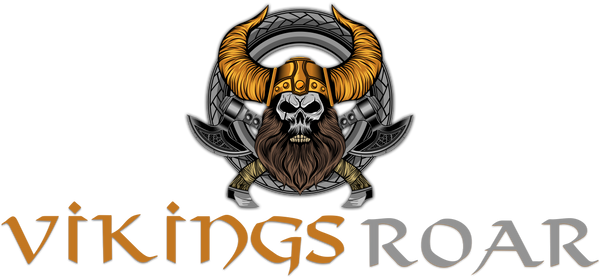
Norse Symbols and Meaning
Share
Norse culture is heavily reliant on symbols, as it is a representation of their faith and beliefs. The symbols hold a lot of meaning and are meant to succinctly communicate Norse wisdom. They were associated with gods and mythology and a way to connect the deities to their powers.
Viking runes were used to create a rich tapestry of symbology that was grounded in both fortune-telling and preserving their mythology. The meanings of these symbols are still debated, but there is clear evidence to reinforce their definitions. There is also debate in the origin of these ancient symbols and their creation.
WEB OF WYRD

The Web of wyrd is a complex interwoven symbol that is representative of the complexities of the fates. It is a representation of the past, present, and future. The interconnections in the symbol depict the unending connections that life and destiny have in the lives of mortals.
AEGISHJALMUR

GUNGNIR

Gungnir is Odin's magical spear and a representation of absolute power and authority. It is carved by dwarves – the most powerful in the realm. The point of the spear has powers that improve its aim and speed.
HUGINN AND MUNINN

Huginn and Muninn represent Odin's ravens as well as the concept of duality. Ravens hold special significance in Norse mythology as a representation of death and transformation. Huginn is the representation of thought while Muninn and memory are symbolic of thought and memory.
MJOLNIR

Mjolnir is the name of Thor's hammer. It is a magical weapon that acts as a boomerang - it always returns to his hand. The symbol has also been depicted as a symbol of fertility, and often found in weddings and homes.
SVEFNTHORN

The sleep thorn, or Svefnthorn was commonly used as a weapon to induce sleep in enemies. The idea was that they would sleep so deeply, they would have trouble waking up. There is another variation of the symbol that is often found, making it even harder to decipher.
TRIPLE HORN OF ODIN

The triple horn of Odin is an emblem of Odin. It depicts three interlocked horns that are drinking vessels. These are traditional to Norse toasting rituals and are connected to the myths of Odin's quest to attain magic mead, or draughts in Norse mythology.
VEGVISIR

The Vegvisir is a symbol to help find one's path, also known as the Viking compass and a symbol for protecting one's self. It is a representation of the different paths to take, and a guide to mortals. The vegvisir literally translates into Way guide.
YGGDRASIL

The Yggdrasil is at the center of both worlds: immortal and mortal. Its roots represent the nine realms of existence, both the seen and unseen worlds. It represents a central tenet for much of Norse mythology - each and everything is in a constant state of transformation.
VALKNUT

Odin's knot or the Valknut, is a symbol of life and death. In Norse mythology, one of Odin's abilities is to guide souls to the afterlife. This is a reference to warriors brought to Valhalla that were connected to Odin's Valkyries.
